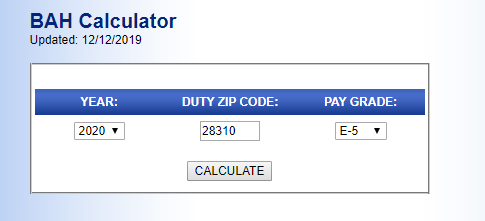Army Bah Regulation 420-1 : What it is
Army Bah Regulation 420-1: What it is
As a member of the Army, understanding the regulations and policies that govern your benefits is essential. One such regulation that directly affects your financial well-being is the Army Bah Regulation 420-1. In this article, we will discuss what the Bah regulation entails, its importance, and how it impacts your military career. Let's dive in!
Brief Overview of Bah

Bah, which stands for Basic Allowance for Housing, is a crucial component of your overall compensation as an Army service member. It is designed to provide housing compensation to military personnel based on their rank, dependent status, and geographical location. Bah is an essential financial benefit that helps service members afford suitable housing for themselves and their families.
Understanding Army Bah Regulation 420-1

The Army Bah Regulation 420-1 is a comprehensive document that outlines specific policies, rules, and guidelines related to the Basic Allowance for Housing. It covers various aspects such as eligibility criteria, rate determination, application procedures, and potential exceptions. The regulation ensures transparency, equity, and accountability in the administration of Bah benefits throughout the Army.
Key Points to Consider
Now that we have established a basic understanding of Bah and the importance of Army Bah Regulation 420-1, let's delve into some key points you should be aware of:
- Bah Eligibility: The first and foremost requirement to receive Bah is maintaining "dependents within the United States." However, there are exceptions in certain cases, such as when service members are stationed overseas without their dependents.
- Bah Rates: Army Bah Regulation 420-1 specifies the criteria used to determine the amount of Bah you are entitled to receive. It takes into account various factors, including your pay grade, dependency status, and duty station location.
- Application Process: The regulation provides detailed instructions on how to apply for Bah benefits. It includes the necessary paperwork, such as the DA Form 5960, which is used to initiate and update Bah entitlements.
Frequently Asked Questions (FAQ)
Q: How often do Bah rates change?
A: Bah rates are reviewed and adjusted annually based on housing market conditions and changes in housing costs. Therefore, it is important to stay updated with the latest Bah rates to ensure accurate financial planning.
Q: Can I receive Bah if I live off-base?
A: Yes, even if you choose to live off-base, you may still be eligible for Bah. However, the amount you receive may vary depending on your housing arrangements and the local housing market conditions.
Q: Are Bah benefits taxable?
A: No, Bah benefits are not taxable. They are considered an allowance rather than income, and therefore, are not subject to federal or state income taxes.
Conclusion
Understanding Army Bah Regulation 420-1 is crucial for every Army service member, as it directly impacts your financial well-being and housing arrangements. By familiarizing yourself with the regulation, you can ensure that you receive the appropriate compensation and make informed decisions regarding your housing needs. Remember to consult with your unit's finance office or Bah coordinator for any specific questions or concerns you may have regarding Bah benefits.
Disclaimer: The information provided in this article is for general informational purposes only and does not constitute official legal, financial, or professional advice. For precise guidance, please refer to the official Army Bah Regulation 420-1 and consult with appropriate Army resources.
Army Bah Regulation 210-50 - Army Military
 Image Source : armymilitary.net
Image Source : armymilitary.net √ Army National Guard Bah Regulation - Navy Visual
 Image Source : navy-visual.blogspot.com
Image Source : navy-visual.blogspot.com Bah Army Regulation - Army Military
 Image Source : armymilitary.net
Image Source : armymilitary.net National Guard Bah Regulation – Jampel
 Image Source : www.jampel.me
Image Source : www.jampel.me Bah Paperwork Army - Army Military
BAH Rates For 2020 (Calculator) - ArmyReenlistment
 Image Source : armyreenlistment.com
Image Source : armyreenlistment.com bah
Army Regulation AR 420-1 Facilities Engineering Army Facilities
army regulation facilities
Army Bah Regulation - Army Military
 Image Source : armymilitary.net
Image Source : armymilitary.net National guard bah regulation – jampel. Army bah regulation. Army bah regulation 210-50. Army regulation facilities. Bah paperwork army